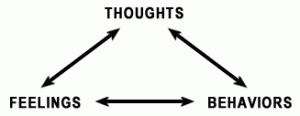Did you ever want to be a Superhero? Did you ever wish that you could possess magical powers, like Harry Potter, or travel around the world in a time machine, called the T.A.R.D.I.S. with an alien who calls himself The Doctor? What if you could, in a way?
Many of us wish we had some kind of magical or extraordinary abilities, and many of us strongly identify with fictional characters, like Batman, Superman, Buffy the Vampire Slayer, characters from Harry Potter, Firefly, and many others. Recent research findings suggest that identifying with fictional characters can actually be extremely beneficial as it can teach us empathy, remind us that we are not alone in our painful experience, inspire us to eat healthier, and allow us to better cope with difficult life transitions.
The goal of Superhero Therapy, therefore, is to help patients who identify with a particular fictional character to use that relationship with that character in order to identify and process their own experiences and feelings, as well as to encourage them to make meaningful changes in their lives. Thus, the goal of Superhero Therapy is to teach us how to become the very magical Superhero-Jedi that we need in order to become the very best versions of ourselves. Superhero Therapy refers to using examples of Superheroes, as well as characters from fantasy and science fiction in research supported therapy, such as cognitive behavioral therapy (CBT) and acceptance and commitment therapy (ACT).
Why Superhero Therapy?
Many people have a hard time identifying their own thoughts and emotions, either because it’s too painful, or they’ve never thought about it. I see many patients with posttraumatic stress disorder (PTSD), including active duty service members, Veterans, and non-military civilians. I find that a lot of the time when I ask my patients how they felt at the time of the traumatic event, or even about which emotions they are experiencing in the present moment, many state that they aren’t sure or do not wish to answer.
However, discussing how a specific character felt at a given moment can be helpful in understanding our own emotions. For example, in the Defense Department’s recent efforts to assist Veterans with PTSD, they’ve contracted an independent company, Theater of War, to put on theatre plays for Veterans with combat-related themes, based on Ancient Greek plays. One of these plays, Ajax, for example, tells a story about a character struggling with his symptoms after the war and eventually committing suicide. Veterans and their spouses who saw the play reported that the play helped them understand their own emotions by relating to the characters. One Veteran in particular was moved by the play, stating: “I’ve been Ajax. I’ve spoken to Ajax.”
Talking about fictional characters’ emotional experiences might seem safer than talking about our own, so with my patients, that is where we often start, later drawing parallels to their own feelings and subsequently switching over to focusing on those. For instance, many service members and Veterans I’ve worked with strongly identify with Superheroes, in particular, Batman, Superman, and The Hulk. Let’s take a look at Superman.

Superman (real name Kal-El) is a comic book character who is an alien from another planet, Krypton, who was sent to Earth as a child. His Earth name is Clark Kent, and while in the Solar System, including Planet Earth, he appears to have superhuman abilities: he possesses super strength, super speed, he can fly, he can fight, he has X-ray vision, and many other cool powers. It is no surprise that Superman is a role model to many service members and Veterans, who believe him to be invincible. The phrase or a variation of the phrase I often hear in this population is “I wanted to be Superman… I failed.” This is a common response many people have, harshly judging their own experiences of having PTSD.
This is a conversation I had with one of my clients:
Client: “I just feel like such a failure.”
Me: “What makes you say that?”
Client: “I wanted to be like Superman, you know? Strong.”
Me: “And now you don’t feel that way?”
Client: “No, I have PTSD.”
Me: “And what does that mean about you?”
Client: “It means that I’m weak.”
Me: “Wow, that’s harsh. Let me ask you this, did Superman have any vulnerabilities?”
Client: “No.”
Me: “No?”
Client: “Well, there’s Kryptonite…”
Me: “Right. What is it and what does it do?”
Client: “Kryptonite is this radioactive material from Krypton, where Superman was born. It takes away his powers and can kill him.”
Me: “So Kryptonite makes him vulnerable?”
Client: “Yes.”
Me: “And does this make him any less of a Superhero?”
Client: “No, of course not… Oh, I see what you mean, that having PTSD doesn’t mean I’m not Superman.”
This is an example of how cognitive behavioral therapy (CBT) could look when using Superhero examples in session. CBT is a type of therapy that looks at the relationship between thoughts, feelings, and behaviors, which are bidirectional, meaning that they affect one another. In the example above, the patient’s thought: “because I have PTSD, that means I’m weak, and I failed in being Superman” is affecting his feelings (making him feel more depressed) and is affecting his behavior (for example, not wanting to socialize with others).
Some of the thoughts we have might not be 100% accurate, often leading to some painful emotions, and maladaptive behaviors. By challenging the validity of the thoughts (testing to see whether or not the thought is accurate), we can get out of the maladaptive loop. A CBT therapist’s job is to teach a patient how to implement the skill of challenging their own thoughts, to change the maladaptive behaviors in order to help the patient recover, as well as become their own therapist, to be able to help themselves in the future.
The other type of therapy that lends itself nicely to Superhero Therapy is acceptance and commitment therapy (ACT). I often describe it as Superhero Training, as ACT teaches us to become the very Superhero (or witch/wizard, vampire slayer, Jedi, or any other title that seems most helpful) that we wish to be by following our values, (the most important things to us, like family, friends, creativity, altruism, spirituality, and others), and by facing whatever dragons show up along the way (thoughts, feelings, personal stories we tell ourselves, such as “I’m a failure” or “I’m not good enough”) and practicing the Jedi-like skill of mindfulness.
Let’s take a look at how Harry Potter can be used in therapy to teach us some of these skills. Briefly, Harry Potter is a young wizard in training, whose parents were killed by Lord Voldemort, an evil wizard. Harry and his friends, Ron and Hermione, are studying magic at Hogwarts School of Witchcraft and Wizardry. When Lord Voldemort and his followers, the Death Eaters, start to come back to power, aiming to exterminate all non-magical humans (called Muggles), as well as all Muggle-born witches and wizards, it is up to Harry and his friends to stop them.
In the first book of the Harry Potter series, Harry, Ron, and Hermione find out that Lord Voldemort is attempting to come to power by trying to steal the Philosopher’s Stone, which grants immortality to its owner. In trying to stop him, Harry and his friends have to undergo a series of dangerous tests. One of them, the Devil’s Snare, is a magical plant that uses its tentacle-like branches to suffocate the person that touches it.
The Devil’s Snare presents a great ACT metaphor of acceptance and experiential avoidance: the plant seems to respond to tension levels, the more one struggles with it, the tighter its grip and the more likely it is to choke them. This is experiential avoidance, trying to escape the present experience, and just like the Devil’s Snare, in most cases, the more we try to escape, the deeper our struggle becomes. However, if we stop struggling and are willing to experience this discomfort (acceptance), then we are more likely to survive – when Hermione lets go of the struggle with the plant, for example, the Devil’s Snare releases her.
Here is how Superhero Therapy using ACT can look in a clinical setting. One of my clients was struggling with panic disorder and was too scared to go to places where a panic attack might take place and where escape might be difficult (this is called agoraphobia). The patient (let’s call her “Lucy”) stated that as a result of her fears of getting additional panic attacks she had to drop out of college, move back in with her parents, was unable to spend time with her friends, was unable to volunteer in a community theatre, which was something she really enjoyed, and essentially put her life on hold. While she did not have many panic attacks when staying at home, Lucy’s life became constricted, based solely around her anxiety disorder. Lucy stated that she would not be willing to go to unfamiliar places until her panic attacks went away completely and she was absolutely sure that they would not happen again. Her thoughts, such as “if I go out, I will have a panic attack” and “I’m weak” prevented her from living the kind of life she wanted.
In our sessions together we talked about the Harry Potter series; her favorite character was Harry’s friend, Ron Weasley. She said that she identified with Ron because of his fear of spiders. While Lucy herself did not have a fear of spiders, she stated that she could relate to Ron because “he knows what it’s like to be really scared, he gets so overwhelmed by spiders that he can’t even move. That’s exactly how I feel.”
In discussing Ron in therapy, Lucy was able to identify that as scared as Ron was of the spiders, when it was really important, specifically, when Hermione was Petrified (turned to stone) by an unknown monster in Harry Potter and the Chamber of Secrets, Ron (as well as Harry) followed the spiders into the Forbidden Forest in order to get the information needed to save Hermione and other Petrified students. This is a great example of the ACT concept of values. No one who read the books can deny that Ron was terrified when he followed and interacted with the spiders. He was probably also doubting his own abilities and might have had many insecure thoughts, such as “I will fail,” or “I’m not good enough,” or maybe even “I’m a coward.” And yet, despite his fear he was able to follow through, he was willing to experience whatever terrifying emotions and thoughts showed up in order to save his friend, showing true courage and heroism.
I will never forget the first time that Lucy and I drove around her block as a part of her facing her fears. She was trembling and was saying that she did not think that she could do it. However, she got behind the wheel, tightened her Gryffindor scarf, and turned on the engine. It took less than 5 minutes to go around the block and when we were finished Lucy was ecstatic. She was in tears, she was laughing, and saying, “I can’t believe I just did that!”
Lucy and I continued working on taking “superhero steps” in her valued direction and practiced driving to a movie theatre and other locations. Lucy still gets anxious sometimes but just like a true Superhero that she is, she courageously goes out with her friends, she’s back in school, and has even traveled abroad with her family.
I always say that the bravest people I know are my patients. It takes a lot of courage to experience overwhelming, and at times, incapacitating, anxiety, to come to treatment, and to face our fears. Many people believe that fear is bad, something that needs to go away for us to live a normal life. However, fear can actually be quite advantageous. In a recent Doctor Who episode, Listen, we learn that fear can be a Superpower. Doctor Who is a British science fiction TV show about an alien, who calls himself The Doctor. The Doctor travels around the universe in a time machine, called the T.A.R.D.I.S. (which stands for Time and Relative Dimension in Space) and saves those in need.
The Doctor is over 2,000 years old, and seems to know a thing or two about fear. His take is this: Fear is a Superpower. Fear causes the release of adrenaline, which makes us think faster and fight harder, suggesting that we don’t need to run away from fear, fear might actually be helpful.
The bottom line is that running way from fear and not living our lives according to our values isn’t helpful, whereas learning how to face our fears in the service of what’s most important to us, that’s what being a Superhero is all about.
If you would like to learn more about Superhero Therapy, please feel free to contact Dr. Janina Scarlet via Twitter @shadowquill, Facebook: https://www.facebook.com/Shadow.Scarletl, or via her website at www.superhero-therapy.com


This is very interesting … I would like to learn more.
Thanks so much, Louise. Feel free to leave any questions you have here or email me: superherotherapy@gmail.com
Are you a therapist?
This is really interesting! So this is the use of Bibliotherapy isn’t it? 😀 I wonder if you can also use examples of Biblical Stories to help too, such as the Book of Job! 😀
Thanks so much, Jess. Great question! 🙂
Bibliotherapy can be a part of it although it isn’t always. It’s usually incorporating examples that the patient can relate to already and inserting them into evidence-based therapy, such as CBT or ACT. Sometimes books or movies might be assigned as bibliotherapy or cinetherapy, depending on the patient.
If the patient can benefit from Biblical stories, then absolutely. The most important thing is that there’s an inspiration to better oneself no matter where it comes from.
I’m a psychologist as well as a television, movie,comic junkie. I was wondering if you could email me more information as I think this would be very beneficial for some of my patients.
Hi Jessica,
great to hear from you, thank you for your comment.There is some research related to par asocial interaction with superheroes and other fictional character and hopefully, next year there will be a treatment manual 🙂
I’m happy to answer any questions you have, feel free to email me
Hi, this is very helpful, I am a second-year mental health student and we have just started a module on CBT what it is. And I am very curious to know more and your work looks like its going to lead me to a better understanding of CBT. Thak You
Collin M
Hi Collin,
thank you so much for your post. I am happy to answer any questions you have. Feel free. to reply to this comment or email me: superherotherapy@gmail.com
Cheers!
🙂